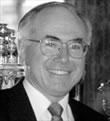E&OE...
Thank you very much Dr Switkowski, Dr Ian Smith, my ministerial colleagues, Julie Bishop, Senator Minchin and Mr Ian Macfarlane, my many other state and federal parliamentary colleagues, Dr Julio De Vido, the lead Minister from Argentina and the many other members of his delegation. And I call it a delegation because this is quite a celebration of cooperation between our two countries. Not only is this a project that demonstrates the capacity of the public and private sectors in Australia to combine in a very balanced way, to bring about a result which is overwhelmingly for the public good, but it is also an illustration of great cooperation between our two countries. And I understand that this particular project is Argentina's largest single scientific export and we really are...really very pleased indeed to be part of this process.
It's just on 49 years ago that that most distinguished of my predecessors as Prime Minister of Australia, Robert Gordon Menzies, came and opened the HIFAR reactor back in 1958. And in the 49 years that have passed since then the debate about the role of nuclear energy, not only in our society, but in the world, has gone through various iterations. The attitude towards nuclear energy and everything associated with it back in 1958 was seen through the prism of what we used to call the Cold War and the world was a very, very different place. And I don't intend, you'll be relieved to know, to take you through the various iterations or entertain you with any projections about the future, except to say that whatever iterations and whatever changes may have occurred, and whatever combination of views are now held, there's no doubt in my mind that nuclear energy, nuclear science will bulk ever larger in the lifestyles, and in the experience and the challenges that the nations of the world, not least our own have.
This is a wonderful day for Australian science. It is a triumph of the belief, by not only scientists, but also those who believe in the central role of science in the Australian community, triumphs of their beliefs over the cynicism of others who tend to see science as some remote, unrelated ephemeral thing that doesn't directly affect the lives of our nation...the lives of our people and of our nation. As a self confessed sports lover and cricket tragic, let me simply say that I often have the opportunity in addressing gatherings such as this, to say that I do look very much to the day when the achievements of Australian science and Australian scientists are as celebrated and as revered as the achievements of the sports men and women of this country. And today is an opportunity to pay tribute to the men and women of science in Australia, not only to the nuclear scientists, but all of those associated with it. Because what we have in this facility is a nuclear medicine facility which is the equal of any that the rest of the world has produced. It takes its place along side the European Union facility, essentially a French effort, and one in the United States. Now that is not bad, if I can put it that way, for a nation of 20 million people. It's not bad for the wonderful band of nuclear scientists in this country that have kept faith over the years in the contribution that science can make.
This facility will relieve human suffering. It will be of direct, often life saving benefit, to countless thousands of our fellow countrymen and women. It will also be a remarkable demonstration to the world of the expertise and the cutting edge capacity of the Australian nation. When you think about the future of Australia you must include in that vision of the future, world class scientific capacity. And the Lucas Heights facility, this OPAL facility, is a metaphor for the contribution that Australian science can make to the future of our country. At $359 million, plus continued operating, and refurbishing and so forth costs, it is a very significant investment. But can I say, and I know these remarks would be echoed by all of my ministers who are present, that it is worth every dollar of the investment that has been made and more because if a nation is unwilling to make a capital investment in projects of this nature, then it's really not interested in our future.
Can I finally say before inviting Dr Switkowski, Dr Smith and Julie Bishop to come and help me unveil the plaque, and officially declare the facility open, can I take this opportunity of expressing my appreciation to all of the employees, in each and every capacity of this facility and this establishment, who have been associated with this project. I could tell as I moved around this morning that every single person had an enormous sense of pride and a great feeling of ownership in what had been achieved. It wasn't just Dr Switkowski, and Dr Smith, Dr Cameron, they had every reason to feel particularly proud, but it was everybody else. And people said to me, did you enjoy that? Wasn't that terrific? Isn't it a fantastic facility? Now you don't get that kind of feeling and that kind of enthusiasm without good leadership from the organisation and the involvement of everybody in such an enthusiastic way is precisely why when we apply ourselves to it, we Australians can do it better than anybody else in the world. And the spirit of partnership and cooperation has been terrific.
So ladies and gentlemen if I could invite Dr Switkowski, Dr Smith and the Minister to join me I will have great pleasure in pulling aside the curtain and thereby declaring open this magnificent facility. Long may it contribute to the assistance of humanity both here and in other nations of the world. Thank you.

